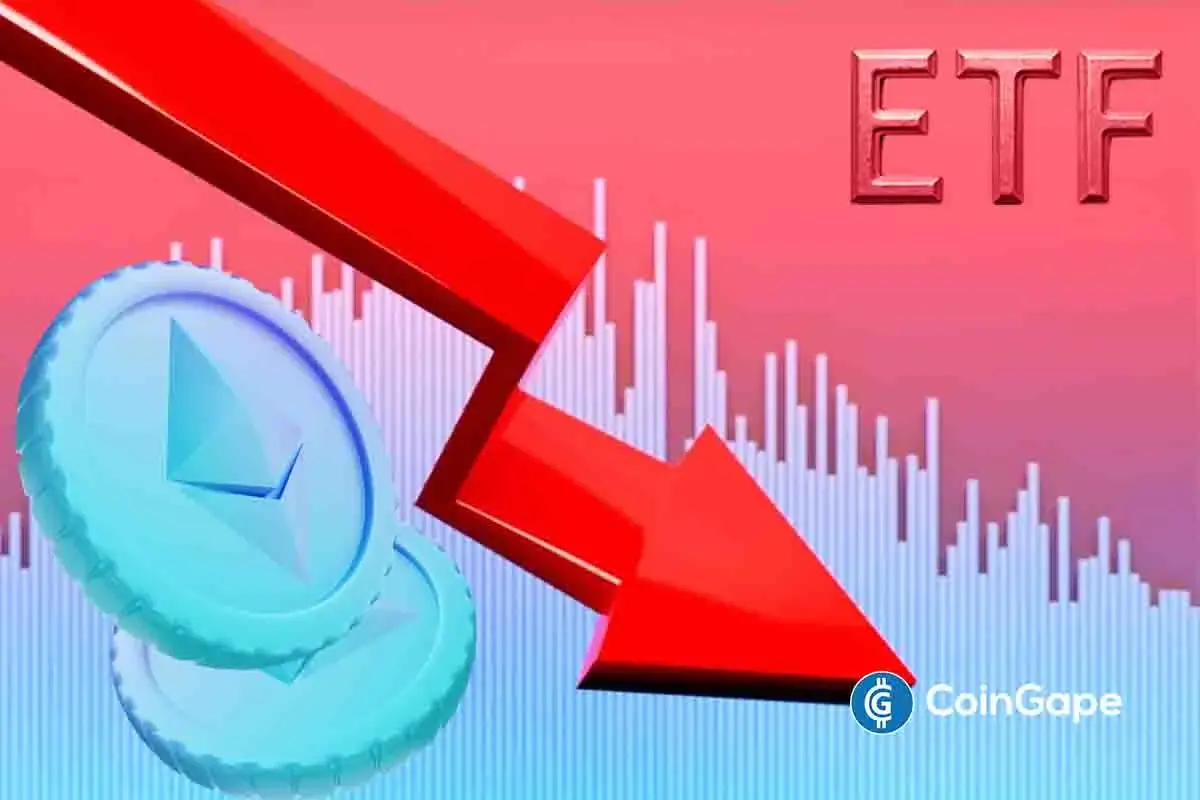Market
FET Price Crash Triggers Historic Losses, Yet Whales Accumulate

Artificial Superintelligence Alliance (FET) has recently experienced a sharp 34% price decline, marking its largest drop in months. This crash validated a three-month-old pattern, which predicted such a correction.
While investors are suffering historic losses, whales seem to be capitalizing on the lower prices, indicating potential confidence in a future recovery.
Artificial Superintelligence Alliance Investors Are Spooked
Realized losses for FET holders have reached their highest levels in the altcoin’s history. This is a result of many investors selling off their holdings earlier this week to prevent further losses. As a result, the general market sentiment remains highly bearish.
Many retail investors are hesitant to make moves, reflecting the pessimistic outlook within the market.
This sell-off has led to heightened caution among the investor base, with traders refraining from significant action in the face of market volatility. The fear of additional losses is currently overpowering the desire to accumulate, causing many to stay on the sidelines.
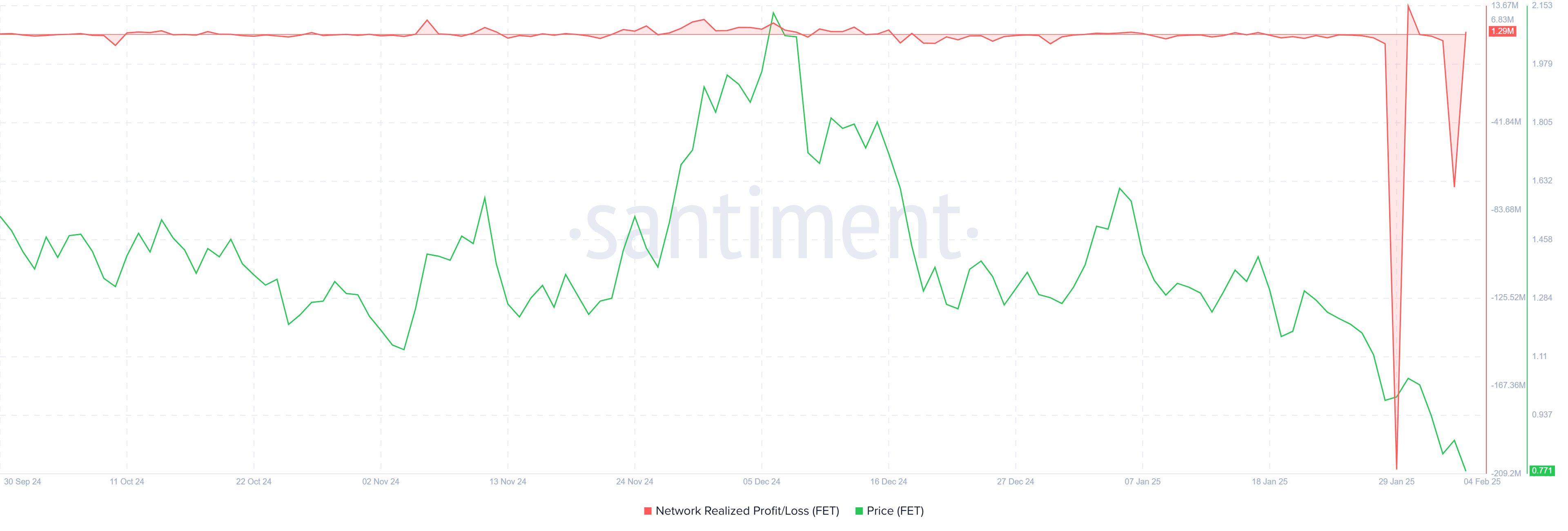
Despite the widespread losses, whale activity has been notably bullish. Addresses holding between 1 million and 100 million FET have added approximately 92 million FET to their holdings over the past week, valued at $70.8 million. This accumulation at lower price levels signals that whales are positioning themselves for a potential recovery, showing confidence in FET’s long-term potential.
This whale accumulation is a key sign of optimism despite the current market downturn. Whales are often viewed as the more experienced market participants, and their ability to buy during periods of significant price decline may indicate their belief in an eventual recovery.
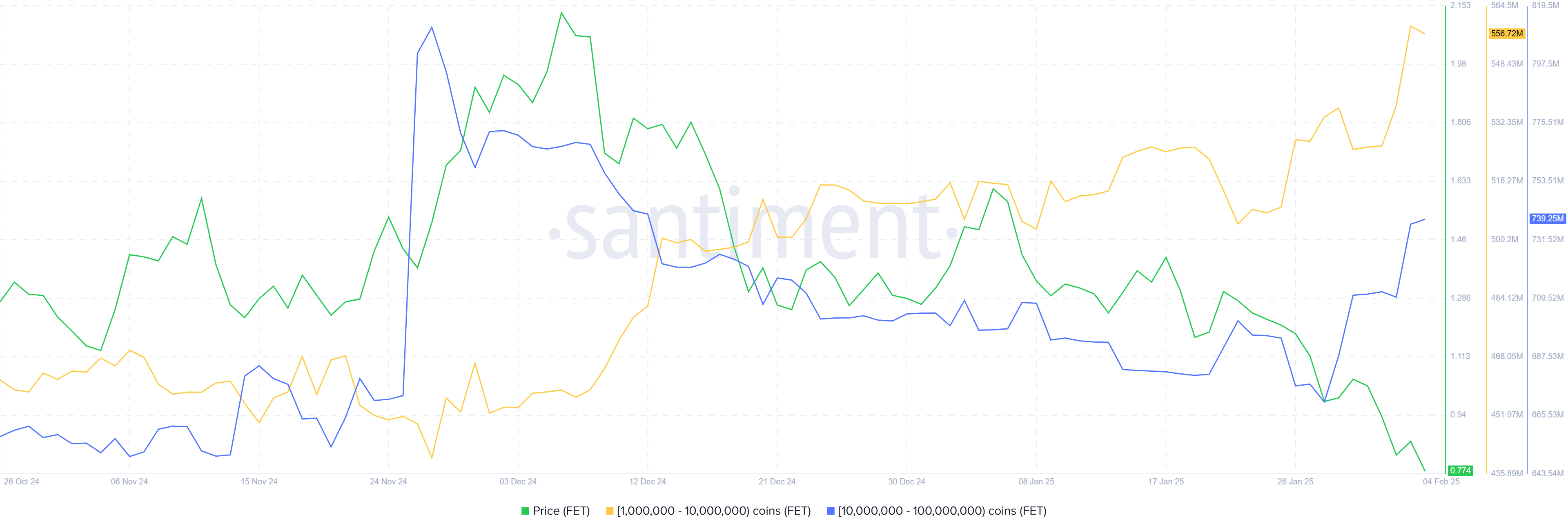
FET Price Prediction: Bouncing Off The Support
FET’s price broke through the key support level of $1.19, falling to $0.77 at the time of writing. This decline confirms the validity of the head and shoulder pattern, which predicted a 43.6% drop to $0.73. The market seems to be experiencing a sharp correction, as expected, leading to this significant pullback.
Currently, FET is holding above the support of $0.76, suggesting it may have reached its market bottom. If this support is sufficient, the altcoin will have a chance to recover its recent losses. However, for a successful recovery, FET must flip $1.04 into support, signaling the end of the correction phase.
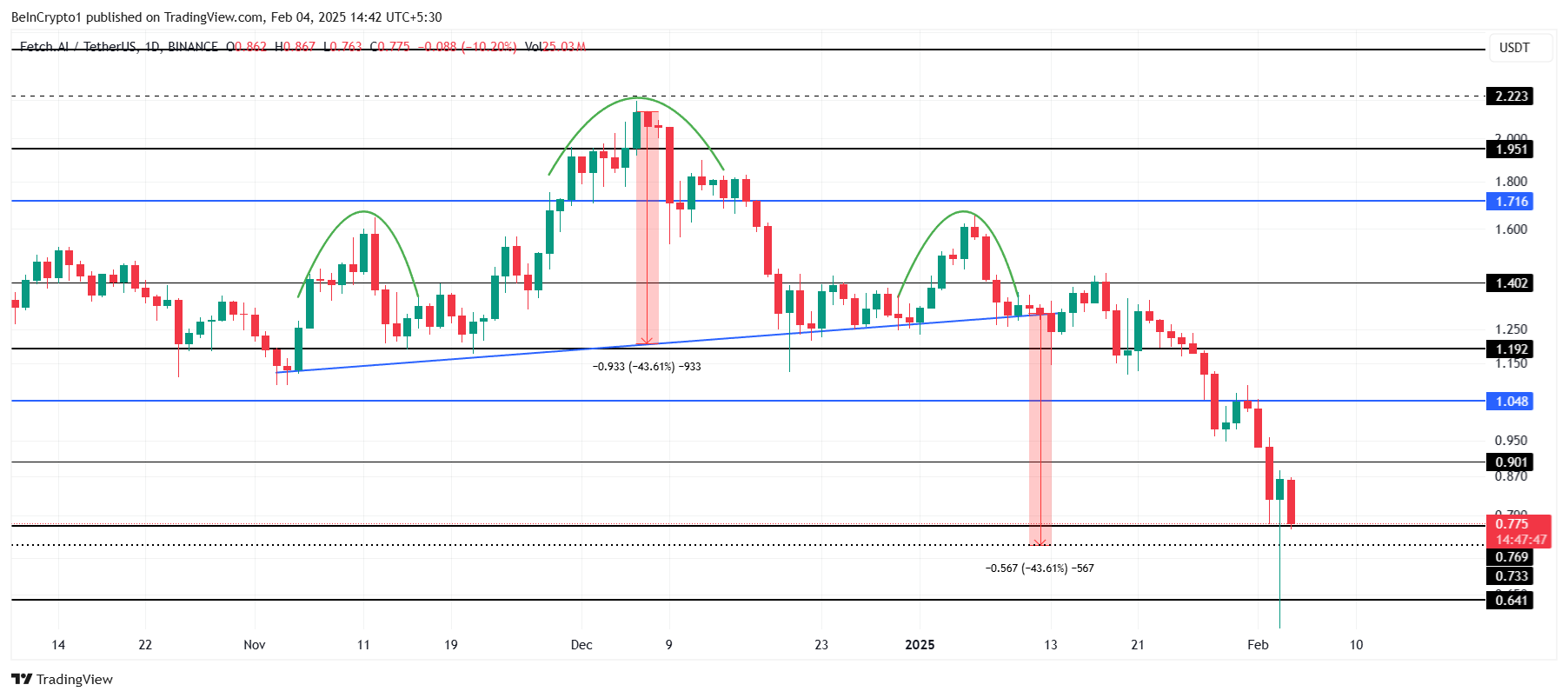
On the other hand, if FET loses the $0.76 support level, it could fall further. The next potential target is $0.73, and a drop below this level could see the price approaching $0.64, which would invalidate the bullish outlook and lead to further losses.
Disclaimer
In line with the Trust Project guidelines, this price analysis article is for informational purposes only and should not be considered financial or investment advice. BeInCrypto is committed to accurate, unbiased reporting, but market conditions are subject to change without notice. Always conduct your own research and consult with a professional before making any financial decisions. Please note that our Terms and Conditions, Privacy Policy, and Disclaimers have been updated.
Market
Base Launches Strong, But Content Coins Draw Doubt

Content Coins are a new trend gaining attention in the crypto space, especially on Base. They are positioned as digital content with value driven by culture and virality. Supporters see them as a new form of expression.
Critics say they’re just meme coins with a different name. Base is pushing the idea forward, hoping it helps the chain stand out from the rest.
Are Content Coins Really Different From Meme Coins?
Content coins are a new concept gaining traction within crypto communities, especially on Base chain. According to Base founder Jesse Pollak, a content coin “represents a single piece of content,” with the core idea being that the coin is the content and the content is the coin — no more, no less.
These tokens are often created in a specific context, either on platforms like Zora.
Essentially, creators design them to function as standalone pieces of digital content, driving the token’s value through cultural impact, virality, or meme-worthiness—rather than any utility or fundamental backing.

Despite the growing popularity of the term, not everyone is convinced. User Kash (@kashdhanda) dismissed the label, saying, “contentcoins are a silly name for memecoins”. He also pointed out that “memecoins are actually closer to financial content than they are to finance.”
David Tso (@davidtsocy), who works at Base, brings a more supportive spin, comparing content coins to “Instagram posts and TikToks that show their value in real time.”
Is Base Is For Everyone Just Another Meme Coin?
Base is for everyone was the first content coin officially launched and promoted by Base. It made an explosive debut, with a market cap nearing $18 million within its first few hours.
Shortly after its peak, the token plummeted nearly 75%. Since then, it has shown signs of recovery, with its market cap now hovering around $9.6 million.
The coin has gained significant traction in terms of activity, currently boasting nearly 21,000 holders, over 29,000 transactions in the last 24 hours, and a daily trading volume close to $9 million.

Base is using this momentum to push a broader narrative: that all content should live on-chain. Base is actively leveraging this philosophy, framing content coins as a new form of internet-native expression where each token represents a piece of digital culture stored permanently on the blockchain.
Yet, despite this push, Base is for everyone remains the only content coin to break out meaningfully—most others haven’t crossed the $100,000 market cap threshold. While the concept aims to separate itself from typical meme coins by embedding value in cultural relevance rather than pure speculation, many remain unconvinced.
Critics argue that content coins are merely meme coins in new packaging. Still, if the trend takes off, it could position Base to outperform other chains like Solana. It would do this by capturing this narrative and driving unique user activity to its ecosystem.
Disclaimer
In line with the Trust Project guidelines, this price analysis article is for informational purposes only and should not be considered financial or investment advice. BeInCrypto is committed to accurate, unbiased reporting, but market conditions are subject to change without notice. Always conduct your own research and consult with a professional before making any financial decisions. Please note that our Terms and Conditions, Privacy Policy, and Disclaimers have been updated.
Market
Pi Network, Grayscale’s Altcoin Shake-Up

This week in crypto recorded several key events across various ecosystems that will continue shaping the industry.
From major partnerships to investment decisions and scam allegations, the following is a comprehensive roundup of crypto news this week.
Mantra Crash: From Billion-Dollar Hype to Fragile Liquidity
This week in crypto Mantra’s powering token lost $90% of its value amid allegations of insider dealing and liquidity fragility. Once hailed as a rising star in the RWA (real-world asset) narrative, OM’s collapse wiped out over $5.5 billion in value.
Reports revealed a disturbing pattern of concentrated wallet activity and low liquidity pools, which made OM highly vulnerable to sudden exits.
On-chain sleuths identified one trader whose aggressive selling triggered a cascade of liquidations. This highlights the risks of low-float, high-hype tokens in an illiquid market environment.
“This was due to an entity(s) on the Binance perpetuals market. That’s what triggered the entire cascade. The initial drop below $5 was triggered by a ~1 million USD short position being market-sold. This caused over 5% of slippage in literal microseconds. That was the trigger. This seems intentional to me. They knew what they were doing,” the analyst stated.
Pi Network: From Chainlink Buzz to Transparency Fears
Pi Network recorded strong optimism this week as its native Pi Coin surged by double digits. BeInCrypto attributed the surge to the announcement of a key integration with Chainlink.
They pitched this strategic collaboration as a gateway to real-world utility. Specifically, it positioned Pi closer to the broader DeFi and smart contract ecosystem. However, the euphoria proved short-lived.
Market sentiment quickly soured as analysts began comparing Pi Network and the recently collapsed OM token.
Allegations suggest that, like the OM token, Pi coin lacks full clarity around circulating supply, wallet distribution, and centralized control. To some, these are potential red flags in an increasingly regulation-sensitive industry.
“The OM incident is a wake-up call for the entire crypto industry, proof that stricter regulations are urgently needed. It also serves as a huge lesson for the Pi Core Team as we transition from the Open Network to the Open Mainnet,” wrote Dr Altcoin.
Pi coin reversed gains within days, falling 18% from its weekly high. At the time of writing, PI was trading at $0.6112, up by a modest 0.7% in the past 24 hours, per CoinGecko.

Grayscale’s Altcoin Shake-Up: 40 Tokens Under Review
This week in crypto also showed that institutional investor interest in altcoins is heating up again, with Grayscale leading the charge.
The digital asset manager unveiled its updated list of assets under consideration for the second quarter (Q2) 2025. BeInCrypto reported that the list featured zero altcoins across sectors such as DePIN, AI, modular blockchains, and restaking. Among the notable tokens being eyed are SUI, STRK, TIA, JUP, and MANTA.
The update reflects Grayscale’s growing thesis around emerging crypto trends, particularly as the firm seeks to expand beyond its core Bitcoin and Ethereum products.
This announcement follows a broader strategic overhaul from three weeks ago when Grayscale reshuffled its top 20 list of altcoins by market exposure. Several older names were dropped at the time, while newer narratives like Solana-based DePIN and Ethereum restaking plays were pushed to the forefront.
The expansion into 40 coins signals Grayscale’s recognition of renewed retail and institutional appetite for differentiated assets. However, inclusion in the list does not guarantee a fund launch. It only indicates Grayscale’s active research.
XRP and SWIFT Partnership: Breaking Down the Rumors
There was speculation this week about a possible partnership between Ripple’s XRP and banking giant SWIFT in crypto.
This narrative was based on a misinterpreted document. A series of cryptic social posts exacerbated the speculation, which some took as confirmation of collaboration between the global payments network and the XRP ledger.
However, BeInCrypto’s in-depth reporting sank the rumors. While Ripple has long pursued banking institutions and SWIFT has shown openness to blockchain innovations, there is no verified partnership between the two.
SWIFT’s public-facing projects around tokenization and digital asset settlement do not include XRP.
Despite the debunking, the rumors sparked an important conversation about XRP’s long-term positioning. The token remains a top-10 asset and a favorite among retail investors banking on utility-driven price appreciation.
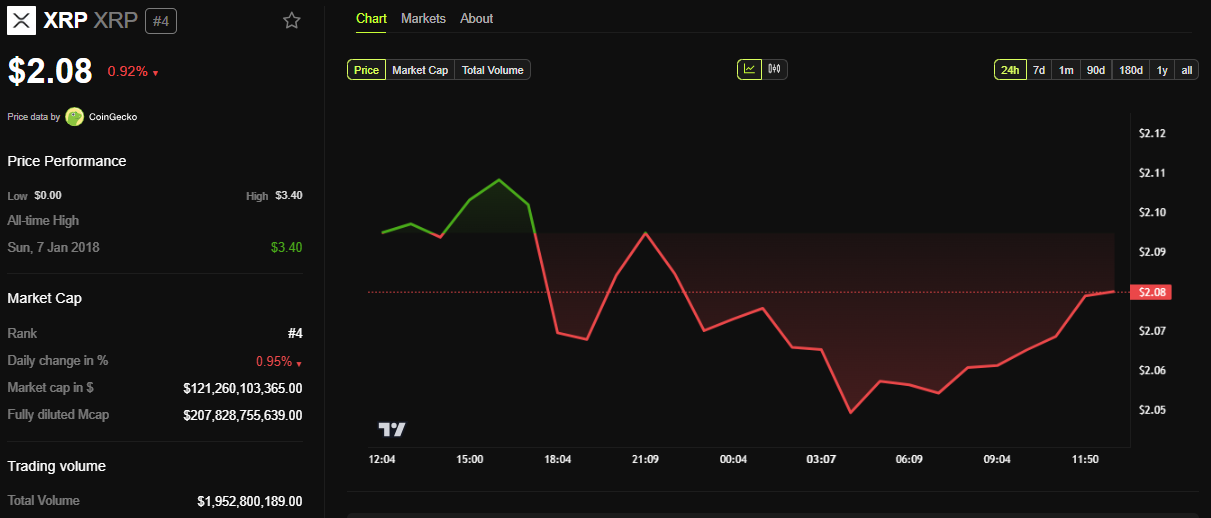
With Ripple’s legal battles with the SEC nearing resolution and international CBDC partnerships in the works, the project is far from irrelevant.
US Dollar Dives: What the DXY Crash Means for Bitcoin
The US Dollar Index (DXY) hit a three-year low this week, sending ripples through the crypto markets. Historically, a falling DXY has been bullish for Bitcoin, and this week was no different, with BTC reclaiming above the $84,000 range.
The greenback’s weakness reflects growing fears of fiscal deterioration in the US, as rate cuts loom and Treasury debt soars.
However, that is just the surface. The global M2money supply has been quietly increasing again, especially across Europe and Asia. This reignites the liquidity conditions that fueled previous bull runs.
Japan’s 10-year bond yields hit multi-decade highs, forcing the Bank of Japan (BoJ) into increasingly precarious interventions. As Japanese liquidity spills outward, crypto and risk assets have become inadvertent beneficiaries.
This macroenvironment is ideal for Bitcoin. Weakening fiat, rising global liquidity, and crumbling bond market confidence create a perfect storm.
Disclaimer
In adherence to the Trust Project guidelines, BeInCrypto is committed to unbiased, transparent reporting. This news article aims to provide accurate, timely information. However, readers are advised to verify facts independently and consult with a professional before making any decisions based on this content. Please note that our Terms and Conditions, Privacy Policy, and Disclaimers have been updated.
Market
TRUMP Meme Coin Ignores $307M Unlock, Bearish Trend Holds
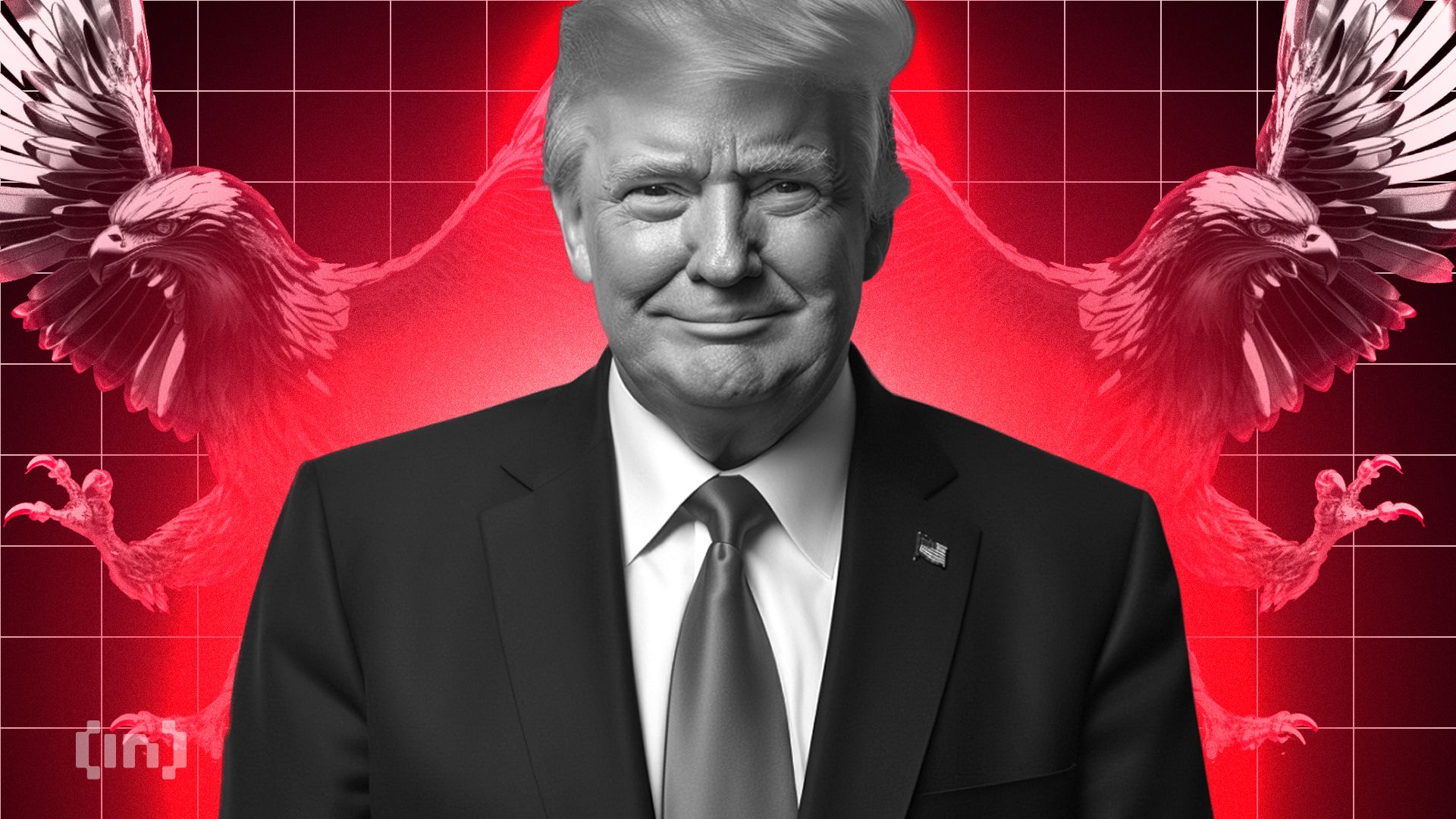
The TRUMP meme coin has struggled to regain momentum, dropping nearly 5% over the past seven days and trading below the $10 mark for the last 16 consecutive days. Despite a major $307 million token unlock, the market response has been muted, and technical indicators continue to point toward weakness.
BBTrend has flipped back into negative territory, the Ichimoku Cloud shows sustained bearish pressure, and EMA lines remain tilted to the downside. Overall, TRUMP appears stuck in a broader downtrend, with no clear signs of reversal for now.
TRUMP Momentum Reverses as BBTrend Drops to -6.93
TRUMP’s BBTrend has sharply dropped to -6.93, a notable decline from its recent positive reading of 2.35 just two days ago. Between April 13 and April 16, the BBTrend briefly turned positive, suggesting a short-lived recovery in trend strength.
However, the quick reversal back into negative territory points to renewed weakness and fading momentum.
This sharp swing signals that whatever bullish attempt emerged during the weekend has likely lost traction, with sellers once again gaining control.

The BBTrend, or Bollinger Band Trend, gauges the strength and direction of a price trend by measuring the expansion or contraction of Bollinger Bands.
Positive values typically suggest strong trend formation—whether upward or downward—while negative values reflect contracting volatility and fading trend strength. With TRUMP now sitting at -6.93, the indicator shows that the market may be losing direction and entering a phase of uncertainty or potential downside drift.
Unless BBTrend shifts back into positive territory soon, TRUMP meme coin could face increased pressure and continued instability in the short term.
TRUMP Remains Bearish Below the Ichimoku Cloud With No Sign of Reversal
TRUMP meme coin is currently trading below the Ichimoku Cloud, which signals a bearish outlook according to the indicator.
The price has failed to reclaim the cloud in recent days, and the flat nature of the Senkou Span B (the lower boundary of the cloud) reinforces the idea of strong overhead resistance and weak momentum.
The Tenkan-sen (blue line) remains below the Kijun-sen (red line), further supporting the ongoing bearish trend. Short-term price action continues to lag behind longer-term averages.
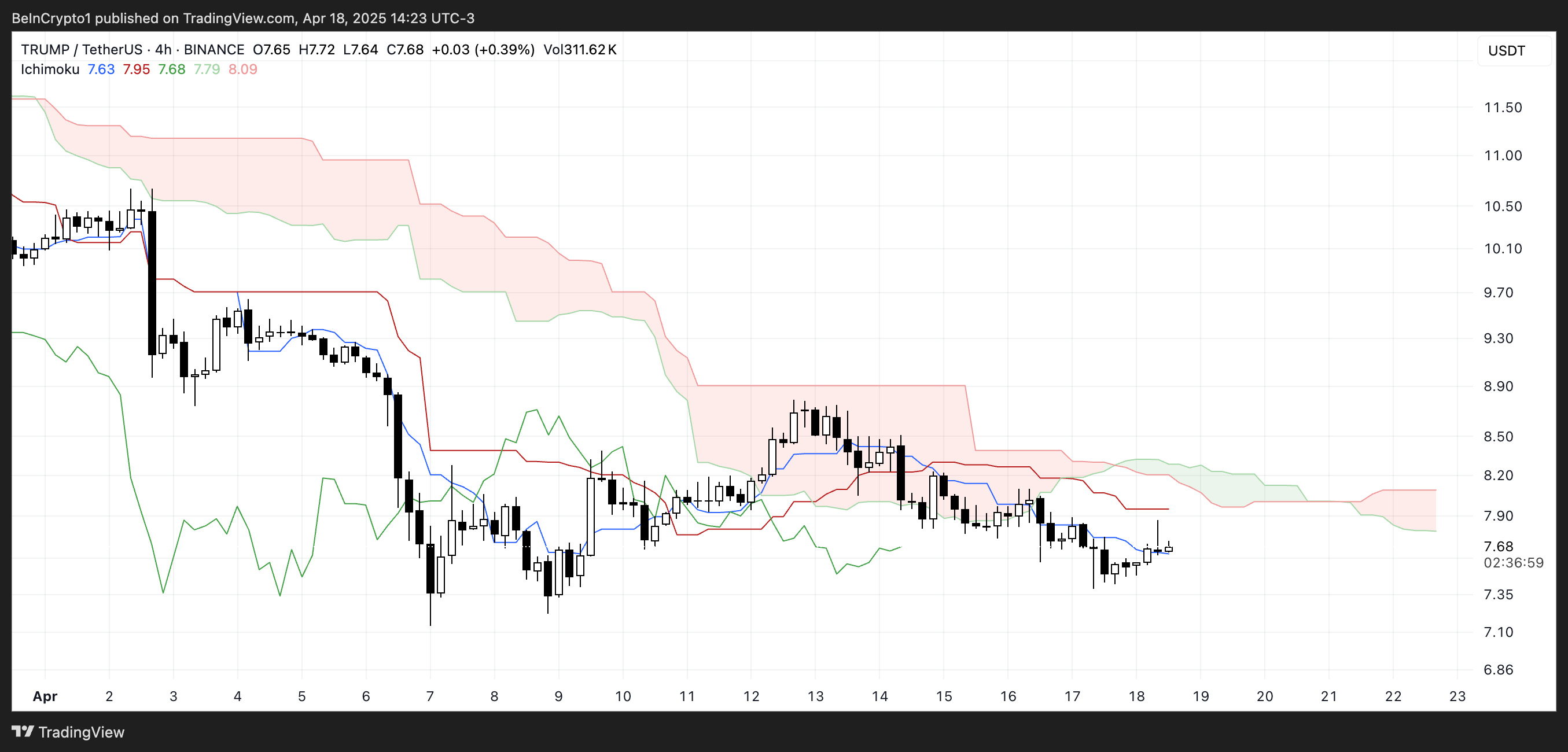
Additionally, the cloud ahead is thin and flat, suggesting that volatility may remain low and that the current trend lacks strength.
The Kumo (cloud) does not show signs of expansion, meaning a strong breakout in either direction is not imminent.
For now, with TRUMP stuck below the cloud and no clear bullish crossover between the Tenkan-sen and Kijun-sen, the bias remains tilted to the downside unless a decisive shift in momentum takes place.
TRUMP Faces Bearish Pressure Despite $307 Million Unlock
Despite a substantial $307.64 million token unlock, TRUMP meme coin has shown little reaction, with sentiment and price action remaining largely unchanged.
The EMA lines continue to point toward a bearish trend, as the short-term averages remain positioned below the long-term ones—reflecting sustained downside pressure.
If this trend persists, TRUMP could soon retest a key support zone, which may determine whether the token stabilizes or sees deeper losses. The lack of a bullish response to the unlock adds to concerns that market confidence is currently weak.

However, a trend reversal could shift the outlook. If buyers regain control and momentum builds, TRUMP meme coin could make a move toward resistance levels, with potential targets around $8.39 and $8.79.
A breakout above those would open the door for further gains toward $10.67, and if the bulls continue strongly, even a move to $12 is possible.
Still, with the EMAs tilted to the downside and no immediate sign of recovery, the burden remains on bulls to reverse the trend and reignite upward momentum.
Disclaimer
In line with the Trust Project guidelines, this price analysis article is for informational purposes only and should not be considered financial or investment advice. BeInCrypto is committed to accurate, unbiased reporting, but market conditions are subject to change without notice. Always conduct your own research and consult with a professional before making any financial decisions. Please note that our Terms and Conditions, Privacy Policy, and Disclaimers have been updated.
-

 Ethereum19 hours ago
Ethereum19 hours agoEthereum Fee Plunges To 5-Year Low—Is This A Bottom Signal?
-

 Market23 hours ago
Market23 hours agoEthereum Price Fights for Momentum—Traders Watch Key Resistance
-
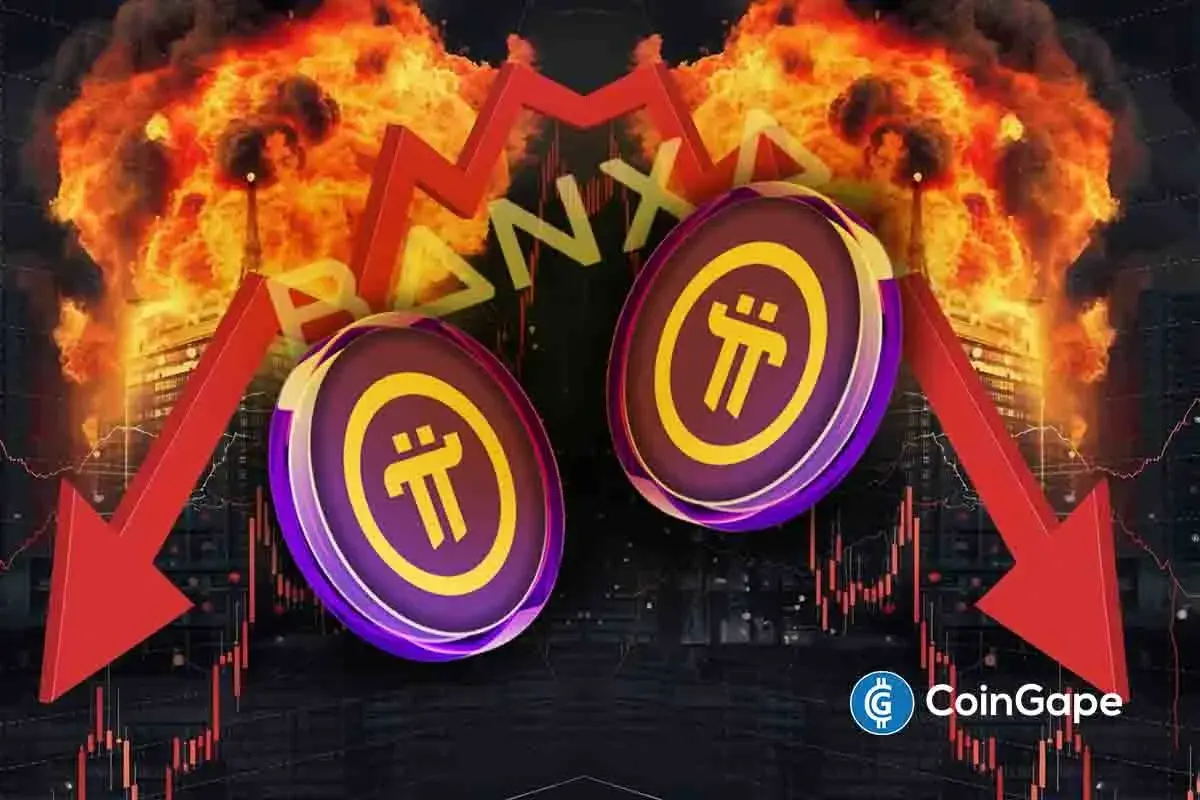
 Altcoin23 hours ago
Altcoin23 hours agoExpert Predicts Pi Network Price Volatility After Shady Activity On Banxa
-

 Altcoin24 hours ago
Altcoin24 hours agoAnalysts Predict XRP Price to Hit $6 as Wave 2 Correction Nears End
-

 Market18 hours ago
Market18 hours agoBitcoin Price Gears Up for Next Leg Higher—Upside Potential Builds
-

 Market21 hours ago
Market21 hours agoIs XRP’s Low Price Part of Ripple’s Long-Term Growth Strategy?
-

 Altcoin21 hours ago
Altcoin21 hours agoShiba Inu Follows Crypto Market Trend With “Shib Is For Everyone” Post, What’s Happening?
-

 Altcoin15 hours ago
Altcoin15 hours agoRipple CEO Brad Garlinghouse Drives XRP’s Global Expansion; Know How









